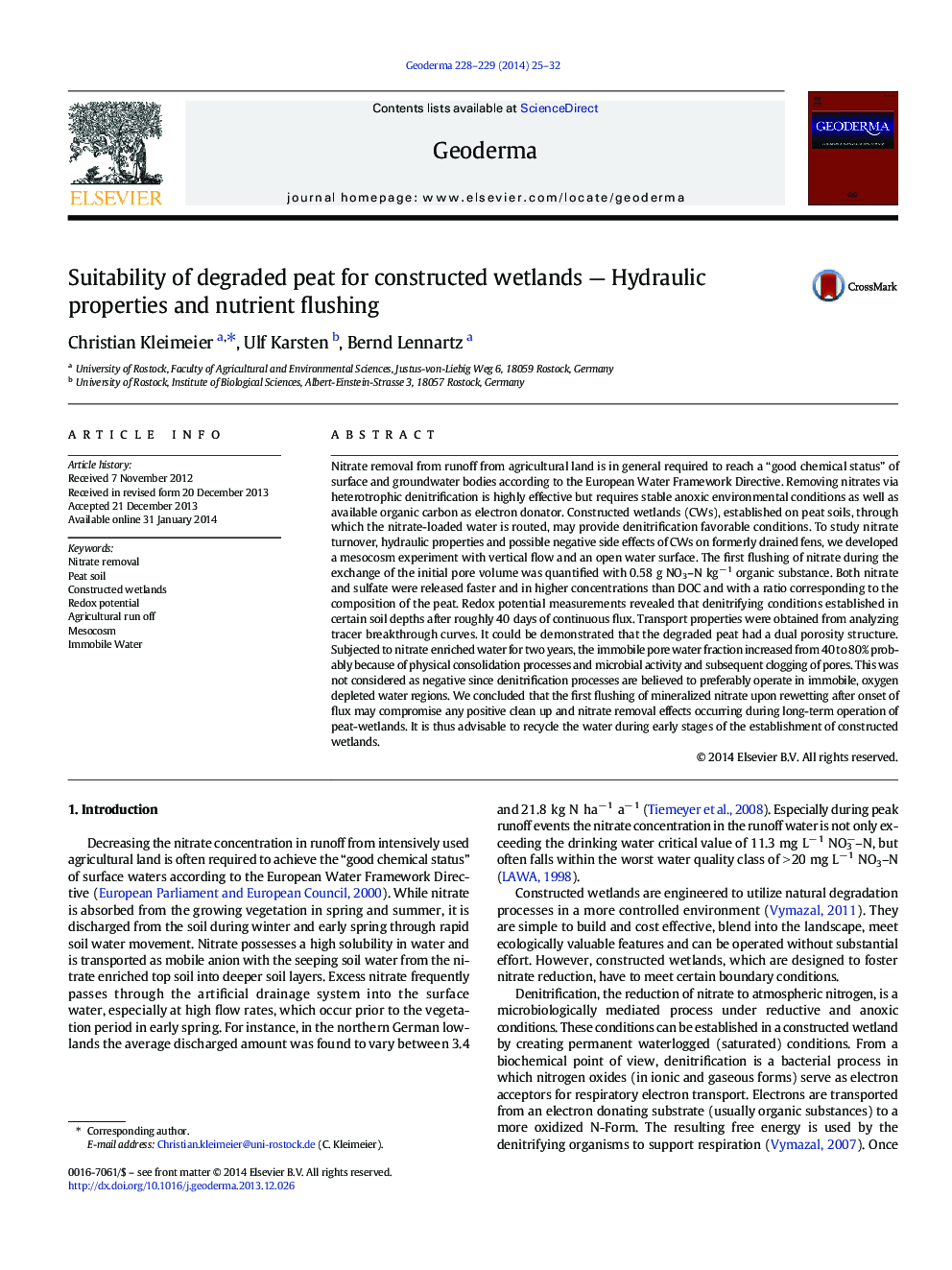| کد مقاله | کد نشریه | سال انتشار | مقاله انگلیسی | نسخه تمام متن |
|---|---|---|---|---|
| 4573350 | 1629471 | 2014 | 8 صفحه PDF | دانلود رایگان |
• Mesocosm setup allowed observation of biogeochemical processes under flux conditions.
• Rewetting of degraded peat releases considerable amounts of nitrate.
• Immobile water phase increases under continuous N loading.
• Denitrifying conditions developed only in specific soil depths.
Nitrate removal from runoff from agricultural land is in general required to reach a “good chemical status” of surface and groundwater bodies according to the European Water Framework Directive. Removing nitrates via heterotrophic denitrification is highly effective but requires stable anoxic environmental conditions as well as available organic carbon as electron donator. Constructed wetlands (CWs), established on peat soils, through which the nitrate-loaded water is routed, may provide denitrification favorable conditions. To study nitrate turnover, hydraulic properties and possible negative side effects of CWs on formerly drained fens, we developed a mesocosm experiment with vertical flow and an open water surface. The first flushing of nitrate during the exchange of the initial pore volume was quantified with 0.58 g NO3–N kg− 1 organic substance. Both nitrate and sulfate were released faster and in higher concentrations than DOC and with a ratio corresponding to the composition of the peat. Redox potential measurements revealed that denitrifying conditions established in certain soil depths after roughly 40 days of continuous flux. Transport properties were obtained from analyzing tracer breakthrough curves. It could be demonstrated that the degraded peat had a dual porosity structure. Subjected to nitrate enriched water for two years, the immobile pore water fraction increased from 40 to 80% probably because of physical consolidation processes and microbial activity and subsequent clogging of pores. This was not considered as negative since denitrification processes are believed to preferably operate in immobile, oxygen depleted water regions. We concluded that the first flushing of mineralized nitrate upon rewetting after onset of flux may compromise any positive clean up and nitrate removal effects occurring during long-term operation of peat-wetlands. It is thus advisable to recycle the water during early stages of the establishment of constructed wetlands.
Journal: Geoderma - Volumes 228–229, September 2014, Pages 25–32
